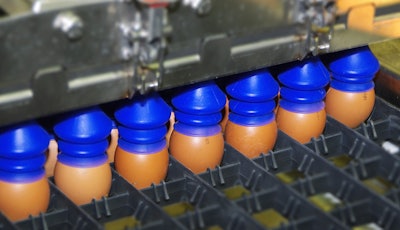
Automated imaging technology developed in Germany could reduce or even eliminate the culling of male chicks at layer farms.
Approximately 6-7 billion male layer chicks are culled each year, a major animal welfare and economic concern for the layer industry. Animal welfare organizations have pressured the egg industry to find an alternative approach.
Egg producers around the world have pledged to adopt in ovo sex sorting technology as soon as it is available. In January 2020, the agriculture ministers of France and Germany jointly announced that the culling of male day-old chicks would be banned by the end of 2021.
“The handling of the male chicks of the laying breeds has always been a challenge and global concerns are growing. The processes currently used by market participants are becoming less and less accepted by society,” explained Jörg Hurlin, Managing Director of AAT.
What is hyperspectral measurement?
The approach uses hyperspectral measurement technology, which uses continuous spectral bands to collect and process information from across the electromagnetic spectrum. The technique is easily automated and able to test more than 20,000 eggs per hour and machine.
“Hyperspectral analysis is a non-invasive procedure. The egg is illuminated with light from below in a closed chamber. The image of the light passing through is captured by a camera on the other side. Based on the calculated light spectrum, the sex of the embryo can be determined. The eggs with the embryos classified as female are then incubated normally,” Hurlin said.
“Furthermore, no chemicals must be used in hyperspectral measurement technology, which also makes the process particularly environmentally friendly. In addition, the technology can be ideally integrated into the processes of modern hatcheries of any size without compromising existing hygiene and biosafety standards.”
As of now, the technique only works on brown hens in the second third of the incubation period, however research efforts are currently focused on finding a method that works on white hens
The technology is already in use commercially by Hy-Line France.
Like what you just read? Sign up now for free to receive the Poultry Future Newsletter.

















